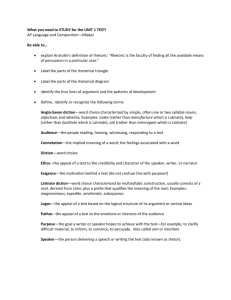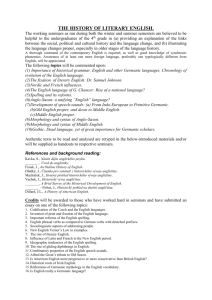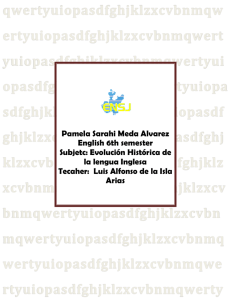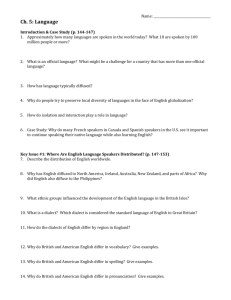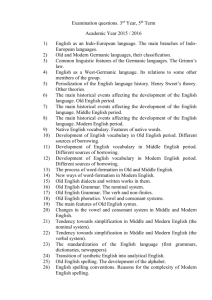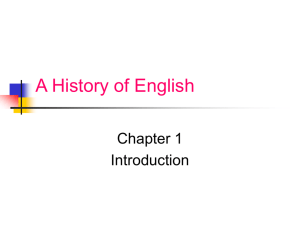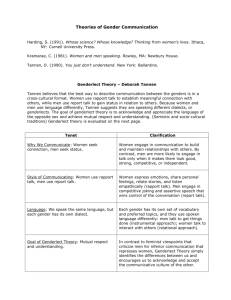docx
advertisement
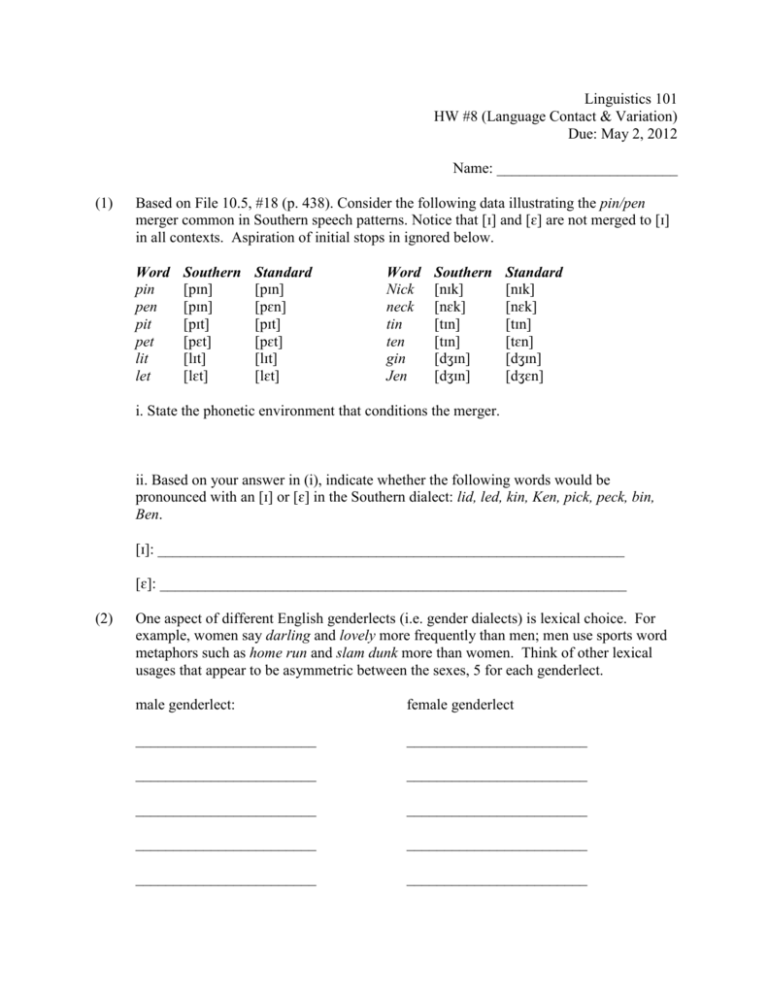
Linguistics 101 HW #8 (Language Contact & Variation) Due: May 2, 2012 Name: ________________________ (1) Based on File 10.5, #18 (p. 438). Consider the following data illustrating the pin/pen merger common in Southern speech patterns. Notice that [ɪ] and [ɛ] are not merged to [ɪ] in all contexts. Aspiration of initial stops in ignored below. Word pin pen pit pet lit let Southern [pɪn] [pɪn] [pɪt] [pɛt] [lɪt] [lɛt] Standard [pɪn] [pɛn] [pɪt] [pɛt] [lɪt] [lɛt] Word Nick neck tin ten gin Jen Southern [nɪk] [nɛk] [tɪn] [tɪn] [dʒɪn] [dʒɪn] Standard [nɪk] [nɛk] [tɪn] [tɛn] [dʒɪn] [dʒɛn] i. State the phonetic environment that conditions the merger. ii. Based on your answer in (i), indicate whether the following words would be pronounced with an [ɪ] or [ɛ] in the Southern dialect: lid, led, kin, Ken, pick, peck, bin, Ben. [ɪ]: ______________________________________________________________ [ɛ]: ______________________________________________________________ (2) One aspect of different English genderlects (i.e. gender dialects) is lexical choice. For example, women say darling and lovely more frequently than men; men use sports word metaphors such as home run and slam dunk more than women. Think of other lexical usages that appear to be asymmetric between the sexes, 5 for each genderlect. male genderlect: female genderlect ________________________ ________________________ ________________________ ________________________ ________________________ ________________________ ________________________ ________________________ ________________________ ________________________ (3) (4) Latin has had a large influence on English, in many cases leading to the existence of pairs of words with essentially the same meaning. In such cases, the Latinate form is often used in academic, scientific or other formal settings, while the Germanic form is often more commonly used in common speech (English is a ‘Germanic’ language, so you can consider this to mean the ‘native’ form). An example of this includes the Germanic form tooth and the Latinate form dental. For the following words, find the corresponding Latinate form. The Latinate form will likely be an adjective. Germanic: Latinate: mother ________________________ dog ________________________ moon ________________________ heart ________________________ water ________________________ Based on File 10.5, #12 (p. 436). For each example below, identify the level of linguistic structure at which the variation exists. Your options are: phonetic, phonological, morphological, syntactic, and lexical. a. ______ b. ______ c. ______ d. ______ e. ______ Some Caribbean English dialects do not have the sounds [θ] or [ð]; instead the sounds [t] and [d], respectively, are substituted, for examples, both [boʊt], there [dɛr]. Many American dialects have the mid back lax vowel [ɔ]. However, this vowel is produced very differently in different dialects—some are more rounded, some less so; some are higher or lower than others. Names differ from place to place to refer to an insect that glows in the dark, including firefly, lightning bug, glowworm, and fire bug. Some African-American English dialects do not mark the third-person singular present tense with a suffix, for examples, he kiss, she see, it jump. Standard American English allows all to follow a wh-word in sentences like What all did you get for Christmas? West Ulster English, spoken in Northern Ireland, allow this order, but it additionally allows all to appear in the object position: What did you get all for Christmas?

